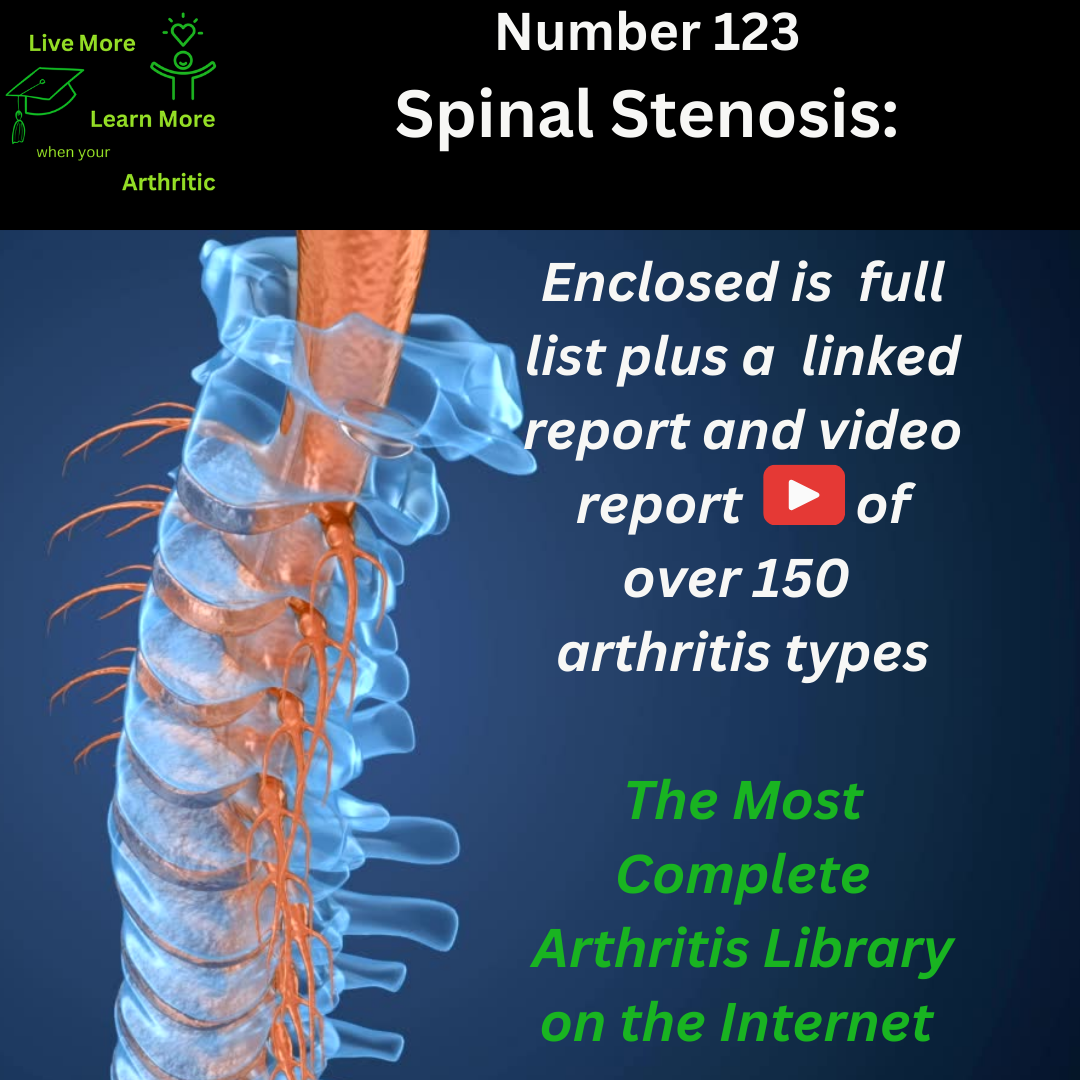
Spinal Stenosis: Number 123 of around 150 types of Arthritis
Understanding Spinal Stenosis: A Journey Through the Backbone
Spinal stenosis is a condition that primarily affects the spine, specifically the spinal canal and nerve roots. It’s characterized by the narrowing of spaces within the spine, leading to compression of the spinal cord and nerves. This compression can occur in various regions of the spine, including the cervical (neck) and lumbar (lower back) areas. Let’s delve deeper into the impacts and complexities of this condition.
 Most Affected Parts of the Body
Most Affected Parts of the Body
The parts of the body most affected by spinal stenosis are typically those associated with the spine, specifically the cervical (neck) and lumbar (lower back) regions. In the cervical spine, symptoms can include neck pain, numbness or weakness in the arms, hands, or legs, and potentially issues with balance and coordination. Lumbar spinal stenosis often presents with lower back pain, sciatica (pain radiating down the legs), and weakness or numbness in the legs or feet.
Remission and Description of the Disease
Spinal stenosis is a chronic condition, and while there may be periods of improvement or remission with conservative treatments such as physical therapy or lifestyle modifications, complete remission is typically not achievable without medical intervention. The disease involves the narrowing of the spinal canal, which can be caused by various factors including aging, arthritis, or structural abnormalities.
Causes and Triggers
Spinal stenosis is primarily caused by changes in the spine that result in narrowing of the spinal canal or nerve root openings. Some key factors contributing to this condition include:
- Aging: One of the most common causes of spinal stenosis is age-related changes in the spine. As we age, our spinal discs (which act as cushions between vertebrae) can degenerate, leading to bulging or herniation. Additionally, the growth of bone spurs (osteophytes) can encroach upon the spinal canal, causing narrowing and compression of nerves.
- Arthritis: Both osteoarthritis and rheumatoid arthritis can affect the spine. Osteoarthritis leads to the breakdown of cartilage and bone, resulting in the formation of bone spurs and inflammation. Rheumatoid arthritis, an autoimmune condition, can cause inflammation in the joints and surrounding tissues of the spine, contributing to spinal stenosis.
- Trauma and Injuries: Previous spinal injuries or surgeries can alter the structure of the spine, leading to instability or the development of scar tissue that compresses nerves.
- Congenital Factors: Some individuals may be born with a narrower spinal canal (congenital stenosis), predisposing them to develop symptoms later in life when combined with other factors like aging.
Symptoms and Limited Range of Motion
 The symptoms of spinal stenosis can vary depending on the location and severity of compression within the spine. Common symptoms include:
The symptoms of spinal stenosis can vary depending on the location and severity of compression within the spine. Common symptoms include:
- Neck or Back Pain: Persistent pain in the neck or lower back that may radiate into the arms or legs.
- Numbness or Weakness: Tingling sensations, numbness, or weakness in the extremities (arms, hands, legs, or feet).
- Sciatica: Pain that radiates down the leg, often following the path of the sciatic nerve.
- Balance and Coordination Issues: Severe spinal stenosis in the cervical spine can lead to difficulty with balance, gait disturbances, and increased risk of falls.

